After noticing its effects on my dreaming, I began to do some research into this strange little herb.

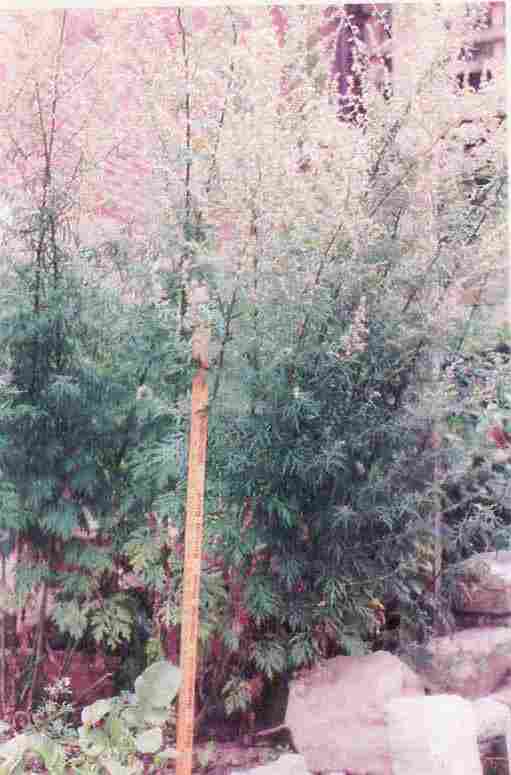
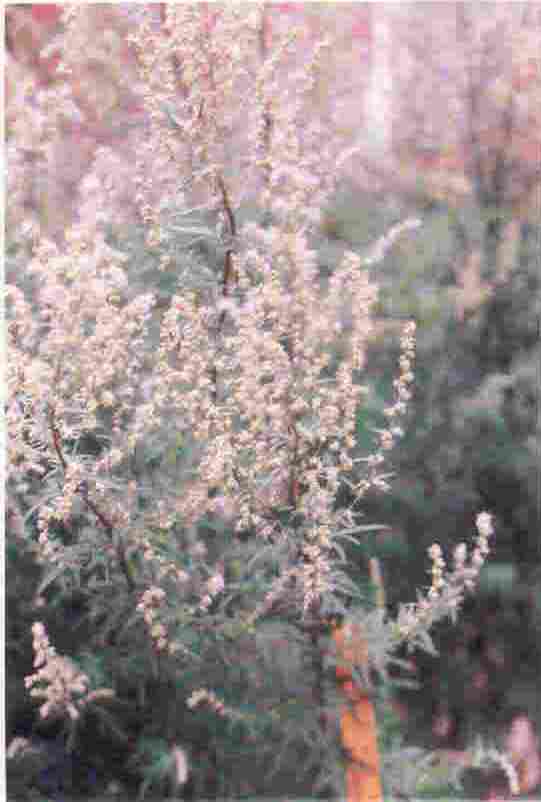
SLEEPING WITH PLANTS:
A LOW TECH APPROACH TO DREAM ENHANCEMENT
by
Ed Wirth
This paper includes the content of a presentation delivered to the
17th Annual Conference of the Association for the Study of Dreams
Panel on Long Term Journal Keeping
July 7, 2000
Washington, D.C.
I began my first dream journal on July 27, 1975. Without these journals I might possibly recall a few dozen of the "big" dreams that I've had, but I certainly would have missed most of the precognitive hits (precogs) and synchronicities (synchs) that I've discovered over the years. My only regret is not having started at a younger age.My motivation for doing dream work was the fact that we sleep about a 1/3 of our lives. By recording dreams I feel that I'm putting some of that lost time to use. I first learned how to practice dream recall in a Jose Silva workshop in 1975. Later I learned how to dream lucidly from reading books by Carlos Castaneda, and I've also experimented with Stephen LaBerge's techniques.
I've spent the last few years going through my journals and putting all of my lucid, precognitive and synchronistic dreams into one hard bound volume to make it easier to keep track of them. I've also done a lot of self experimentation using various herbs and plants. This started with a casual comment by Gina S., a member of the Dream Workshop, started by Cynthia Pearson in Pittsburgh. Gina reported that she had heard that the herb mugwort, if placed in your pillow, was supposed to enhance dreams, making them more vivid.TRYING MUGWORT
Curious, I purchased an ounce of mugwort, put it in a paper sack, wrapped it with a rubber band and tossed it into my pillow case. The effects for me were immediate and dramatic. My dreams became more vivid and realistic, so much so that I’ve continued the practice for the last four years.
I have also noticed an unexpected side effect of sleeping with mugwort -- a steady increase in the number of precognitive and synchronistic dreams. Some have been so accurate as to be rather spooky. I had always noticed some of this sort of thing happening in dreams over the years, but the occurrences have increased tremendously since my experiments with mugwort.
I began my mugwort experiments on January 16, 1997. To provide a before and after perspective, the table below shows the number of dreams recorded in my journal along with the precogs/synchs and lucid dreams from January, 1995 through December, 2000.
| YEAR | 1995 | 1996 | 1997 | 1998 | 1999 | 2000 |
| Total dreams recorded | 637 | 734 | 801 | 864 | 798 | 806 |
| Precogs and synchs | 7 | 11 | 36 | 56 | 64 | 83 |
| Lucid dreams | 4 | 5 | 7 | 7 | 2 | 9 |
Note that while the number of precogs/synchs have increased dramatically -- occurring in a low of 1% of dreams in 1995 to a high of 10 % in 2000-- I have not seen a corresponding increase in lucid dreams.After noticing its effects on my dreaming, I began to do some research into this strange little herb.
Mugwort is a member of the Artemesia family, Artemesia vulgaris. Its cousin wormwood, Artemesia absinthium, is noted for its use in the production of absinthe, a narcotic liqueur popular in the 19th and early 20th centuries. Another cousin, sagebrush, including Artemesia tridentata and Artemesia ludoviciana, has a long history as a visionary aid.In European folklore, mugwort is said to give the following powers: protection, strength, psychic powers, prophetic dreams, healing and astral projection. Its main active ingredients are cineole (C10 H18 O) and thujone (C10 H16 O). Cineole is both an expectorant and a flavoring agent, also known as eucalyptol. Thujone is reported to produce both visual and auditory hallucinations when taken internally, and has a molecular structure similar to that of THC (tetrahydrocannabinol), the intoxicant found in marijuana and hashish.
Because of this similarity, thujone is believed to interact with the same biological receptors in the brain as THC. It is not water soluble and if taken internally, such as in an alcoholic beverage like absinthe, it will accumulate in the body and is reported to cause brain damage. (However, there is also speculation that some of absinthe's deleterious effects may have been the result of unscrupulous manufacturers adding copper sulfates and antimony salts to the beverage to enhance the characteristic green color of absinthe. This would have resulted in heavy metal poisoning.) But while thujone is known to be a dangerous substance to ingest in high concentrations-- in wormwood oil, for example-- at lower levels it is found in many herbs and food products.There appears to be little or no research into its olfactory effects. In a 1995 study, chemist Janet Arey of the University of California at Riverside identified thujone emissions in the atmosphere around California sagebrush, proving it to be a volatile organic compound emitted by vegetation. This same volatility could account for the altered dream states, considering that the olfactory centers of the brain are quite large. This is equally significant since the pineal gland is stimulated by both photic and olfactory input. In Eastern philosophy, the pineal gland is believed to be the seat of the Third Eye, an important psychic center.
The various sages used ritually by Native Americans are not members of the same Salvia family as culinary sage, but are in fact Artemesias. While on a vision quest, the seeker of visions would lie upon a bed of sage, also burning it to purify the space and keep evil spirits at bay. During the Sun dance, participants wear crowns, belts, bracelets and anklets of sage. It also covers the floor of the sweat lodge and is rubbed over the body during the sweat lodge ceremony.Wiccans burn mugwort while scrying; acupunturists use mugwort smoke for healing; and it is said that John the Baptist wore a girdle of it in the wilderness. It may be that thujone from Artemesia plants is absorbed through the skin as well as breathed into the lungs, contributing to the visionary experience. Although I do not wish to minimize the visionary experience by interpreting it as a mere chemical reaction, it could be that certain plants, acting in a symbiotic manner, enable these experiences to happen more easily.
The use of herbs and plant allies by native people as well as our European ancestors predate modern chemistry by centuries and a chemical reaction doesn't explain the ability to 'see' into the future via dreams and visions. But it certainly could explain some sort of triggering mechanism inherent in the human brain. Native Americans also believe that putting a sprig of sage behind the ear will enable one to hear the spirits speak. In a similar manner, Australian Aborigines claim that chewing roasted pituri leaves and placing the quid behind the ear strengthens the action of the experience with the plant. Due to the proximity to the brain and the large number of capillaries behind the ear, this makes sense. In a similar fashion, westerners use scopolamine patches behind the ear to prevent motion sickness.
EXAMPLES OF SYNCHRONISTIC DREAMS
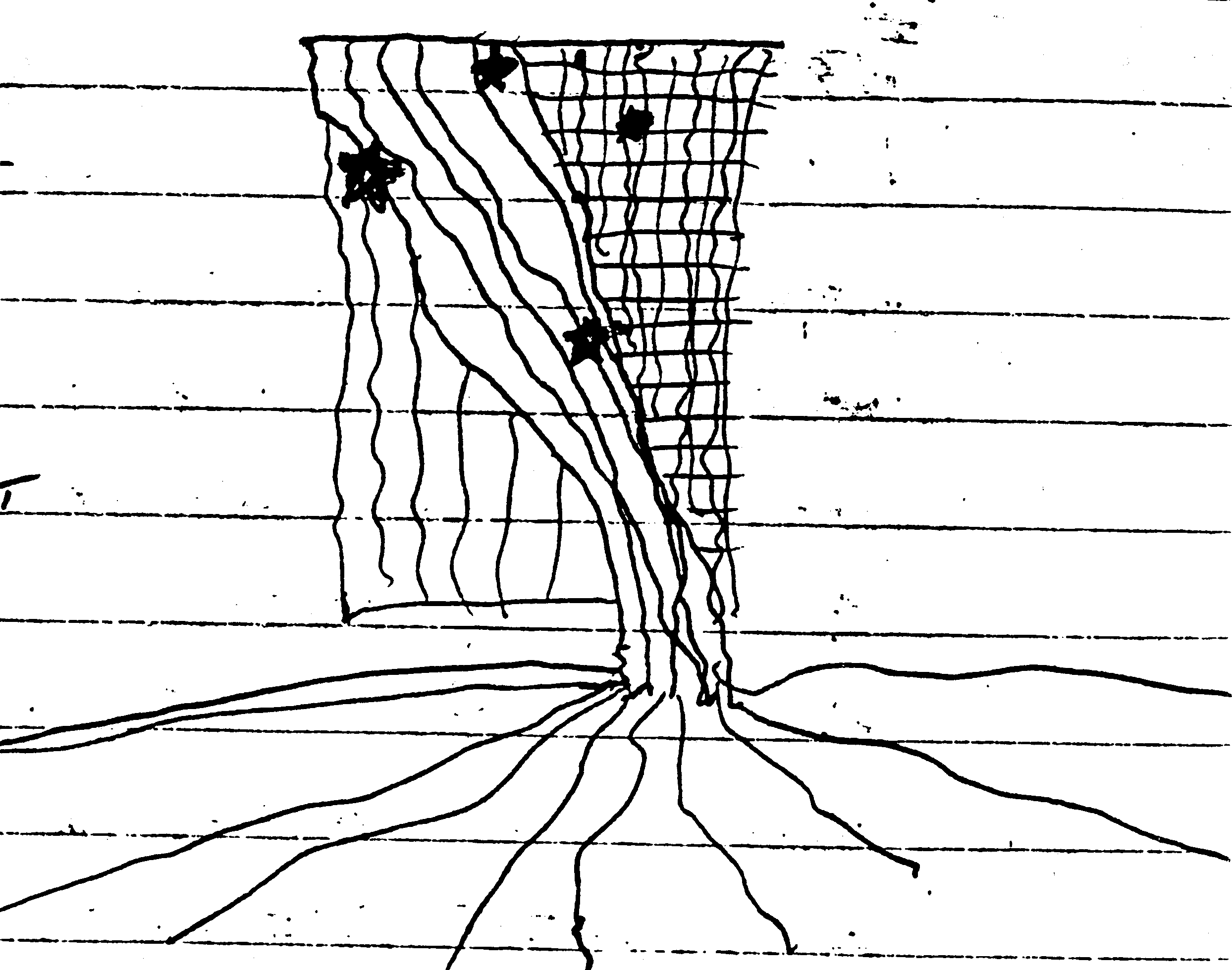
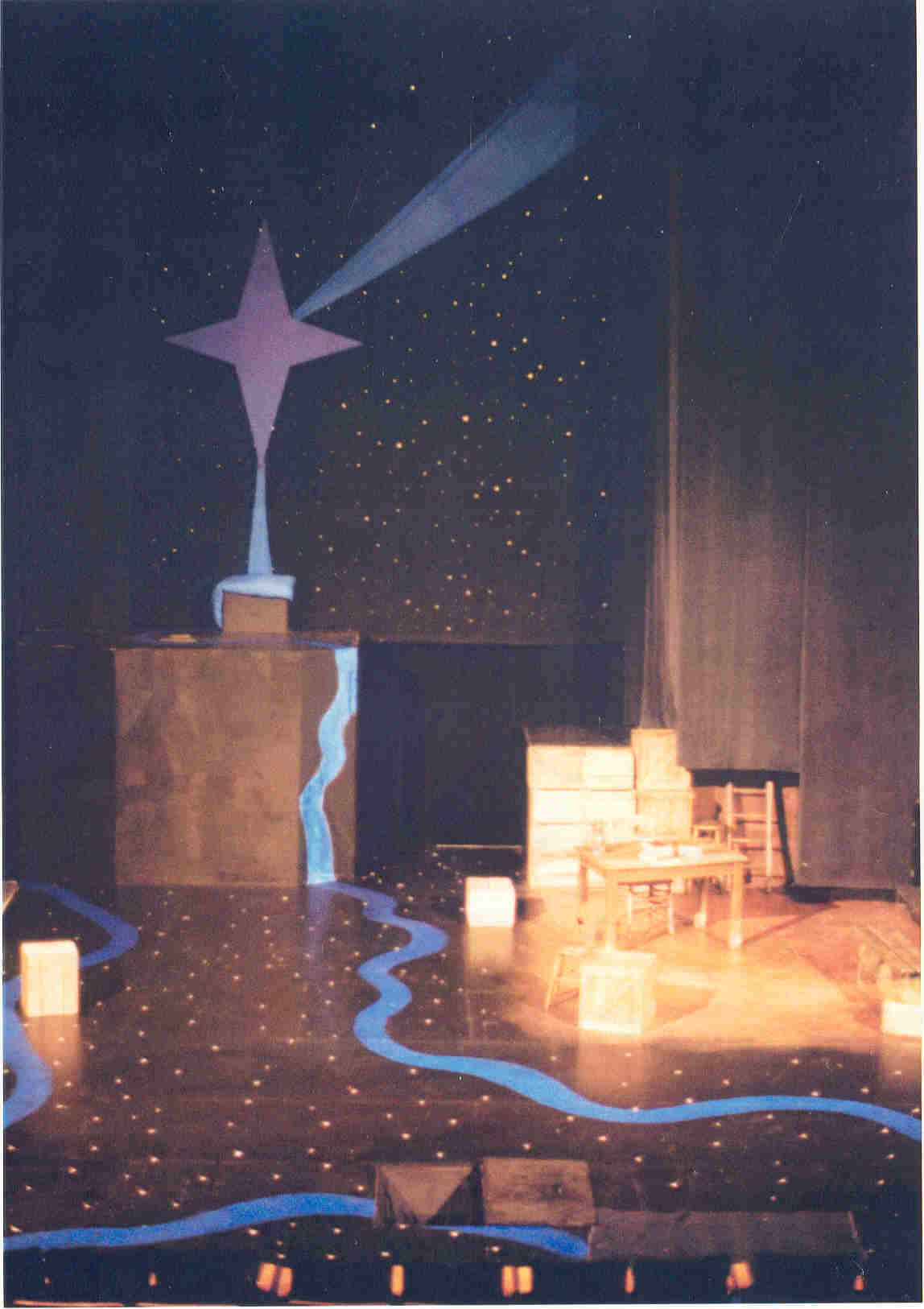
Behind the large purple star on the right is a fabric scrim backed by Christmas lights like stars. Note the blue fabric 'river' descending from the star and running across the floor. This synch took four years and seven months to manifest. I didn't know the set designer and although I have performed in several shows with this company over the last three years, I was not involved with this production in any way. When I showed my dream drawing to the director, he was stunned.There would be additional synchs when I arrived at the 2000 ASD conference to give this paper. Wade in the Water is about the Underground Railroad, on which Pittsburgh was a vital hub. A keynote address at the conference was "The Underground Railroad of Dreams." In one of his presentations, Robert Moss described how Harriet Tubman led escaping slaves to the Underground Railroad by dreaming the way. A day later, an underground train was featured in a dream that Richard Russo described in his presentation on the Long Term Journaling panel.
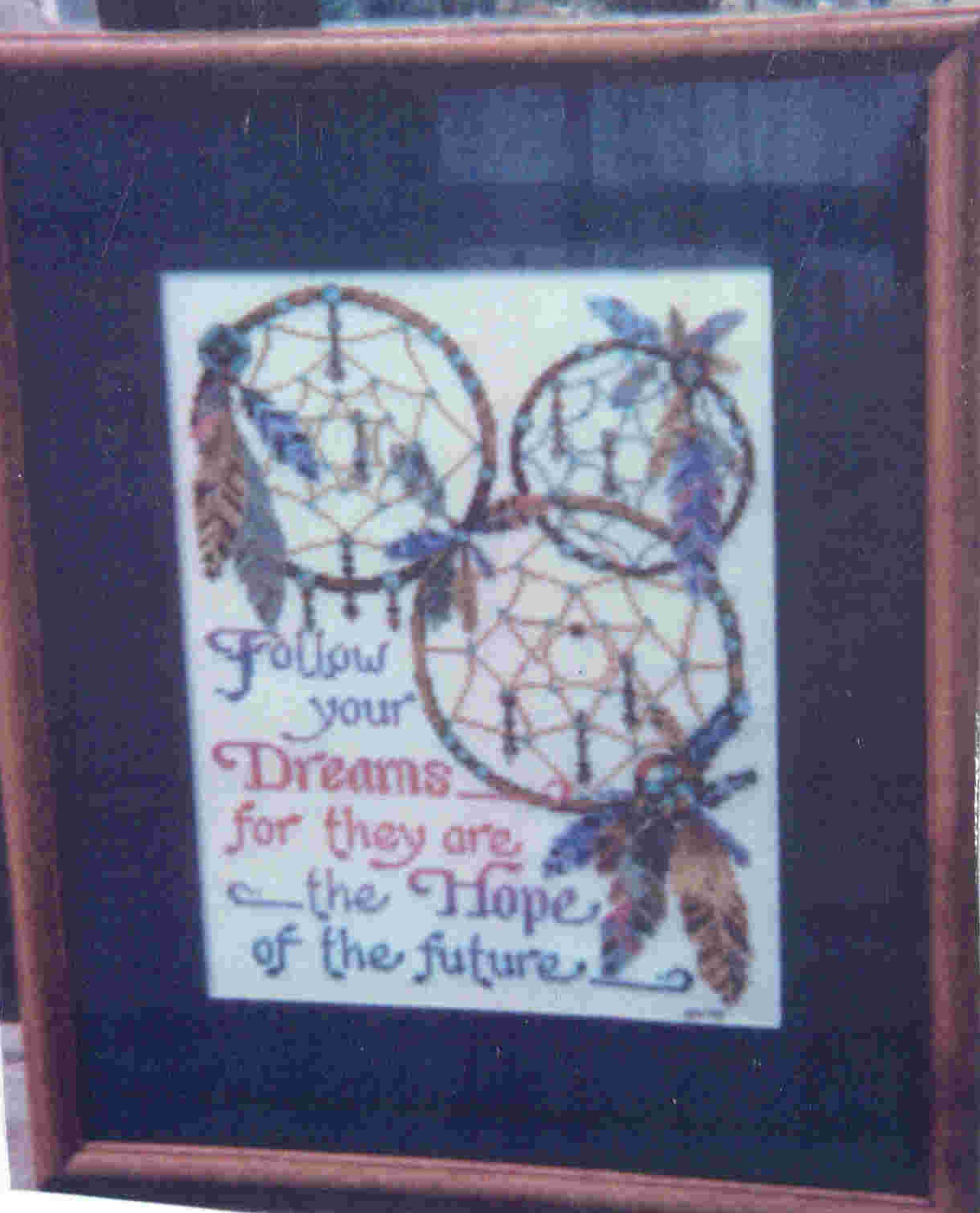 large
box, only to find that they are all just replicas of Indian things." This
was an instant synch. At the time of this dream, I was working nights
and slept during the daytime. When I awoke that day I looked down my stairs
and could see that the door on my porch was blocked by a large box that
had been delivered by the postal service. The package contained a belated
birthday gift that my sister had made for me. It was a framed needlepoint
piece showing overlapping dream catchers with the inscription, "Follow
your dreams for they are the hope of the future."
large
box, only to find that they are all just replicas of Indian things." This
was an instant synch. At the time of this dream, I was working nights
and slept during the daytime. When I awoke that day I looked down my stairs
and could see that the door on my porch was blocked by a large box that
had been delivered by the postal service. The package contained a belated
birthday gift that my sister had made for me. It was a framed needlepoint
piece showing overlapping dream catchers with the inscription, "Follow
your dreams for they are the hope of the future."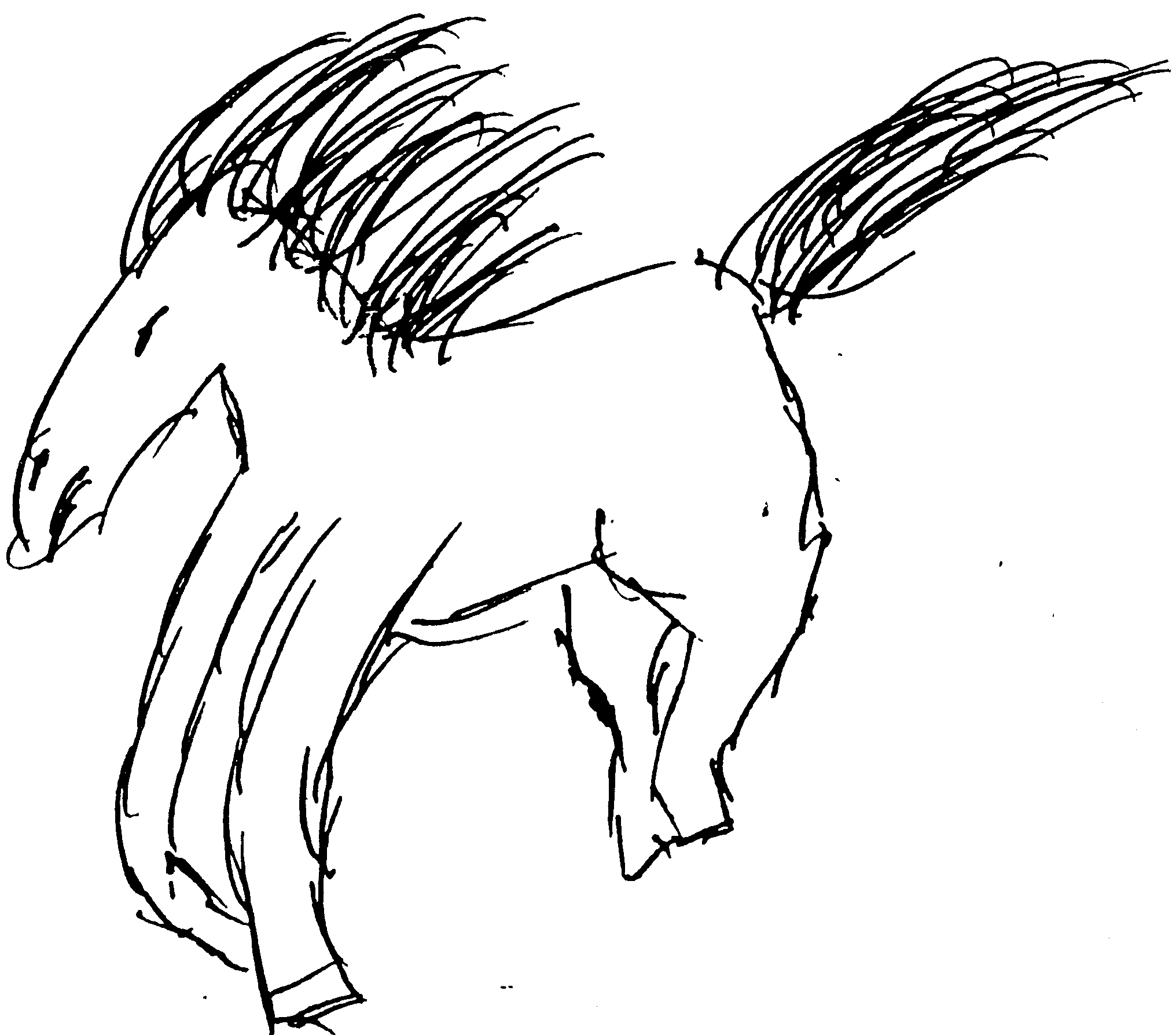


 A
month before the conference, on 6/8/00, I dreamed that, "I
am looking at the comics section of a newspaper. I see a cartoon
showing a mountainous area with the shapes of a bison, bear and a boar
super-imposed on the mountain's face. A dog is acting frightened, as if
he sees the animals rather than rock, and two boys with the dog are asking,
"What's bothering him?" I realize, semi-lucidly, that this is a synch
with a dream that I recently had of other animal shapes in rocks. A second
cartoon shows two demons overlooking hell, with people suffering around
a lake of fire. One demon says to the other, "We need a change."
The next panel shows a cool lake, beautiful trees and rolling green hills,
but now all of the people are individually wrapped in flames which cannot
be extinguished. The demons, still overlooking the scene, are saying, "That's
better." The next day (6/9/00), I received my membership materials from
the ASD which included the spring issue of its magazine, Dream Time.
Inside was an interview with cartoonist Jesse Reklaw about his "Dreamtoons,"
and featured a number of cartoons drawn from dreams. I did not know of
the author of this piece, Richard Russo, but a few weeks later I would
meet him at the conference, and learn that we were on the same Long Term
Journal Keeping panel together.
A
month before the conference, on 6/8/00, I dreamed that, "I
am looking at the comics section of a newspaper. I see a cartoon
showing a mountainous area with the shapes of a bison, bear and a boar
super-imposed on the mountain's face. A dog is acting frightened, as if
he sees the animals rather than rock, and two boys with the dog are asking,
"What's bothering him?" I realize, semi-lucidly, that this is a synch
with a dream that I recently had of other animal shapes in rocks. A second
cartoon shows two demons overlooking hell, with people suffering around
a lake of fire. One demon says to the other, "We need a change."
The next panel shows a cool lake, beautiful trees and rolling green hills,
but now all of the people are individually wrapped in flames which cannot
be extinguished. The demons, still overlooking the scene, are saying, "That's
better." The next day (6/9/00), I received my membership materials from
the ASD which included the spring issue of its magazine, Dream Time.
Inside was an interview with cartoonist Jesse Reklaw about his "Dreamtoons,"
and featured a number of cartoons drawn from dreams. I did not know of
the author of this piece, Richard Russo, but a few weeks later I would
meet him at the conference, and learn that we were on the same Long Term
Journal Keeping panel together.A FINAL WORDThujone is also found in a variety of common plants and herbs including culinary sage, borage, tansy, eastern white cedar, clary sage, western red cedar, tarragon, thyme and rosemary. Many of these plants are also recommended for dream work. I'd be interested in hearing from others who are now or will be sleeping with plants; I can be reached at ejw1951@yahoo.com. I also hope to try some of the other plants when I have the time, but for now I'll keep working with my mugwort. Sweet dreams.
REFERENCES
Hoffman, David. The Complete Illustrated Holistic Herbal. New York: Barnes & Noble, 1986.
Hylton, William H., ed. Rodale Herb Book. Emmaus, PA: Rodale Press,1974.
Lucas, Richard. Secrets of the Chinese Herbalists. New York: Parker Publishing Co., Inc., 1977.
McKenna, Terrence and Dennis. The Invisible Landscape. New York:Harper Collins Publishing, 1993.
Mails, Thomas E. Mystic Warriors of the Plains. New York: Barnes & Noble, 1995.
National Institute of Environmental Health Sciences, National Toxicology Program (NTP). “Alpha-Thujone” (cf. Nomination Background link for "Summary Data for Chemical Selection.") Retrieved from the World Wide Web on January 29, 2001: http://ntp-server.niehs.nih.gov/htdocs/Results_status/ResstatT/M980059.html
Pendell, Dale. Pharmako/poeia: Plant Powers, Poisons and Herbcraft. San Francisco: Mercury House,1995.
Prisinzano, Thomas. “Thujone.” MedChem Feature Molecule Series, a service of the Department of Medical Chemistry, Virginia Commonwealth University. Retrieved January 29, 2001 from the World Wide web: www.phc.vcu.edu/feature/thuj/thujone.html
Russo, Richard. “Dreamtoons: An Interview With Jesse Reklaw,” Dream Time Magazine, Vol. 17, No. 2, Spring, 2000.
Savinelli, Alfred. Plants of Power. Taos, NM:Alfred Savinelli, 1987.

Copyright 2001 Cynthia Pearson